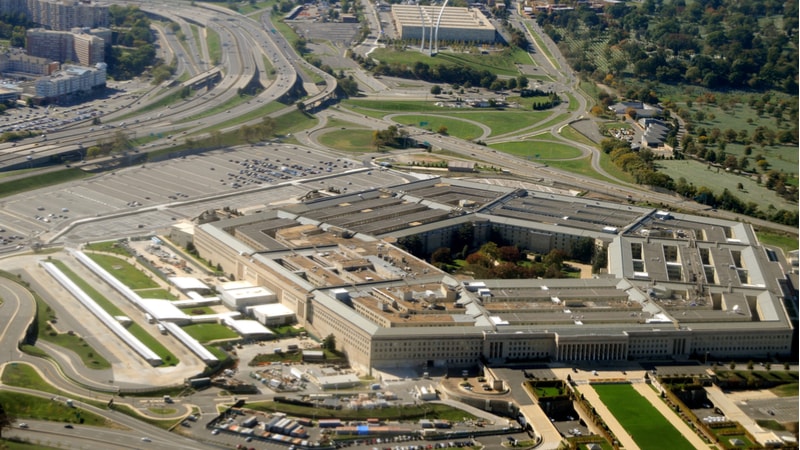
President Donald Trump today unveiled a $1.01 trillion defense budget for fiscal year (FY) 2026, fulfilling his long-standing pledge to push military spending past the trillion-dollar mark, and proposing a pay raise for military personnel.
The proposal’s heavy reliance on reconciliation funding, however, is drawing pushback from some Republican lawmakers who argue it falls short of the president’s promise.
The White House’s FY2026 budget request calls for a 13 percent increase in defense spending, with $893 billion in discretionary funds and $113 billion in mandatory funding from a Republican-led reconciliation bill – bringing the total request to $1.01 trillion.
According to the budget framework, or “skinny budget” document, “the President’s topline discretionary budget holds the line on total spending while providing unprecedented increases for defense” which “would be made possible through budget reconciliation.”
That reconciliation bill proposes a $150 billion boost in military spending, a substantial portion of which the administration plans to use in FY2026, despite the funds being eligible for use over a four-year period.
The defense portion of the reconciliation bill now heads to the House Budget Committee, where it will be folded into a broader legislative package. While the bill has yet to be approved, it is expected to move forward with relative ease as the package can be advanced through the Senate under special reconciliation rules, allowing Republicans to bypass the filibuster and pass it with a simple majority vote.
Top Republicans in House, Senate Response to Budget Proposal
While the White House is touting the proposal as “the President’s promise to achieve peace through strength,” some Republican lawmakers argue that the funding request falls short of what’s needed to meet today’s military threats.
House Armed Services Committee Chairman Mike Rogers, R-Ala., said in a statement that he was “very concerned the requested base budget for defense does not reflect a realistic path to building the military capability we need to achieve President Trump’s Peace Through Strength agenda.”
“We are no longer deterring our adversaries. We are being outpaced in the development and deployment of critical military capabilities. And our defense industrial base has atrophied to the point where I fear we could no longer sustain a prolonged conflict. This all stems from chronic underinvestment in our national security, which is being driven by [Office of Management and Budget (OMB)] bureaucrats,” he said.
Senate Armed Services Committee Chairman Roger Wicker, R-Miss., echoed those concerns, pointing out that the $1.01 trillion figure depends heavily on reconciliation funding that the administration intends to use largely in FY2026. “The administration is not requesting a trillion-dollar budget. It is requesting a budget of $892.6 billion,” he said, referring to the discretionary portion alone.
“The Big, Beautiful Reconciliation Bill was always meant to change fundamentally the direction of the Pentagon on programs like Golden Dome, border support, and unmanned capabilities – not to paper over OMB’s intent to shred to the bone our military capabilities and our support to service members,” Wicker said.
“For the defense budget, OMB has requested a fifth year straight of Biden administration funding, leaving military spending flat, which is a cut in real terms,” he said. “This budget would decrease President Trump’s military options and his negotiating leverage.”
What’s on Trump’s FY2026 Budget Wish List?
According to the White House, the president’s FY2026 request would help achieve his “peace through strength” agenda by prioritizing investments to “strengthen the safety, security, and sovereignty of the homeland; deter Chinese aggression in the Indo-Pacific; and revitalize America’s defense industrial base.”
Front and center in the president’s agenda is making “a down payment on the development and deployment of a Golden Dome for America.” President Trump launched the Golden Dome project via an executive order earlier this year calling for the development of the new missile defense system.
While the president’s FY2026 budget does not specify figures for this down payment, the reconciliation bill places the Golden Dome missile defense project as the second-largest item on the list, allocating $25 billion in funding to support its development and deployment.
As part of his FY2026 defense budget, President Trump is also proposing a 3.8 percent pay raise for servicemembers. This represents a slight decrease from former President Joe Biden’s 4.5 percent increase for servicemembers in the FY2025 budget request. Unlike Biden’s FY2025 proposal, however, President Trump’s budget makes no mention of a pay raise for civilian defense employees.
